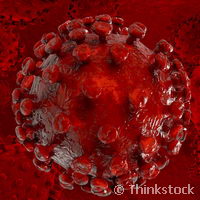Trending science: Researchers use HIV to fight HIV
Since the beginning of the HIV epidemic, almost 75 million people have been infected with the virus and about 36 million people have died of HIV. In 2012, a total of 29 000 new cases of HIV were reported in the EU and the European Economic Area. However, this week, media are reporting that researchers have discovered a method for using the virus as a tool in the fight against hereditary diseases - and in the long term, against HIV infection itself as well. According to RT, researchers at Aarhus University have succeeded in altering HIV particles to repair human genomes in a process dubbed the 'hit-and-run' technique. This means that HIV particles could soon be harnessed in a new way to treat hereditary diseases and the virus itself. The researchers in Aarhus have succeeded in altering HIV virus particles so that they can simultaneously, 'cut and paste' in our genome via biological processes. The altered particles are effectively transformed into vessels to carry 'scissors' -to cut out the faulty part of a genome, and biological material - to patch the hole. Jacob Giehm Mikkelsen, associate professor in genetics from Aarhus University, explains, 'Now we can simultaneously cut out the part of the genome that is broken in sick cells, and patch the gap that arises in the genetic information which we have removed from the genome. The new aspect here is that we can bring the scissors and the patch together in the HIV particles in a fashion that no one else has done before.' Science Alert notes that the new technique is a lot safer than previous cut and paste methods. In this technique, the 'scissors' used to cut the DNA are in the form of a short-lived protein carried by the modified HIV virus particles. This means that they cannot replicate and start cutting uncontrollably. This had been a concern with previous techniques. Professor Mikkelsen elaborates, 'In the past, the gene for the scissors has been transferred to the cells, which is dangerous because the cell keeps on producing scissors which can start cutting uncontrollably. But because we make the scissors in the form of a protein, they only cut for a few hours, after which they are broken down. And we ensure that the virus particle also brings along a small piece of genetic material to patch the hole'. Researchers have dubbed this the 'hit-and-run' technique because the process is fast and leaves no traces. Design & Trend reports that the technique cells could even be dosed with genes suited to fight certain cancers, as well as certain hereditary diseases. Yujia Cai of the research team concludes, 'By altering relevant cells in the immune system (T cells) we can make them resistant to HIV infection and perhaps even at the same time also equip them with genes that help fight HIV.'For more information, please visit:http://elifesciences.org/content/3/e01911



